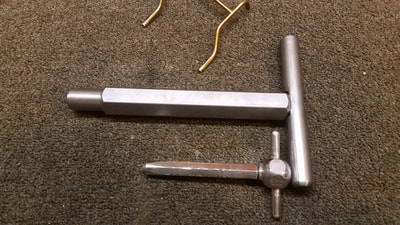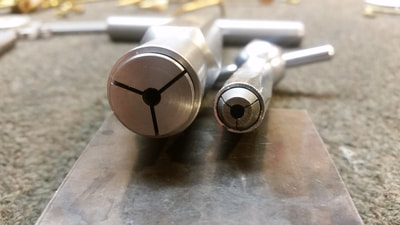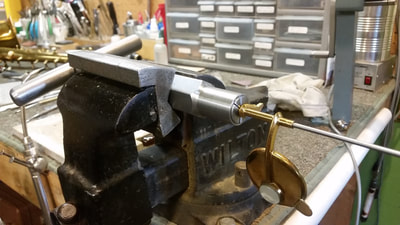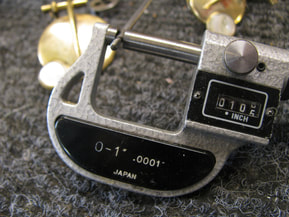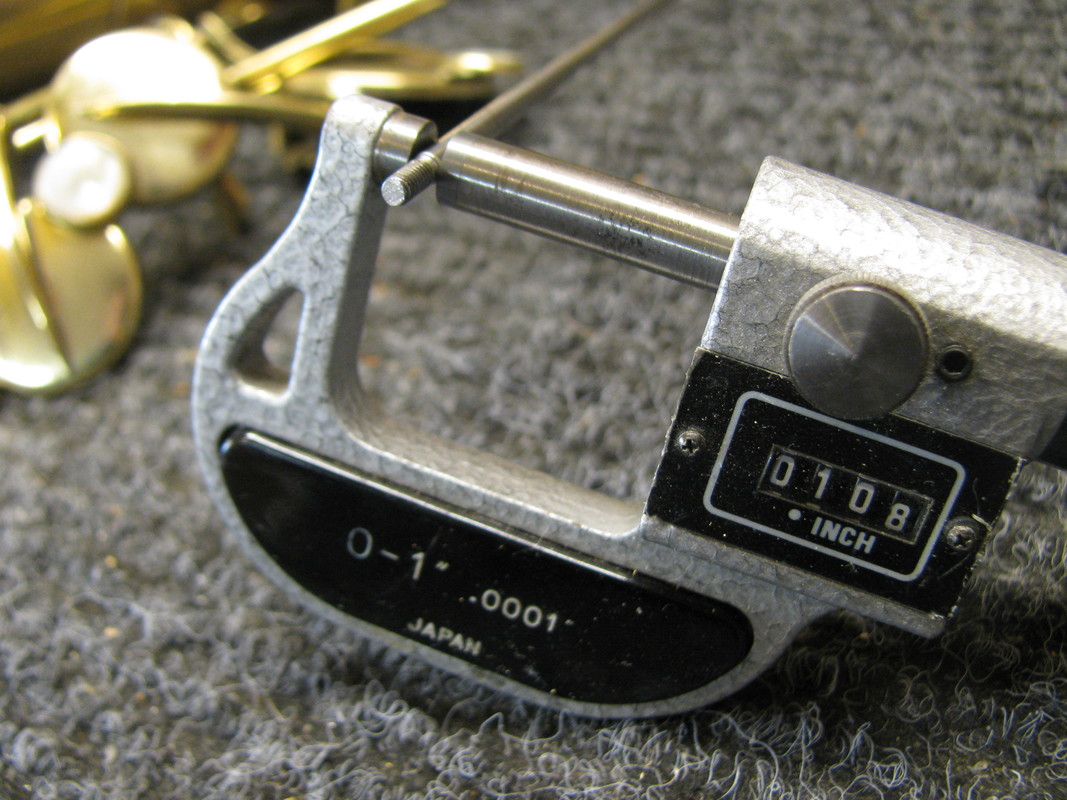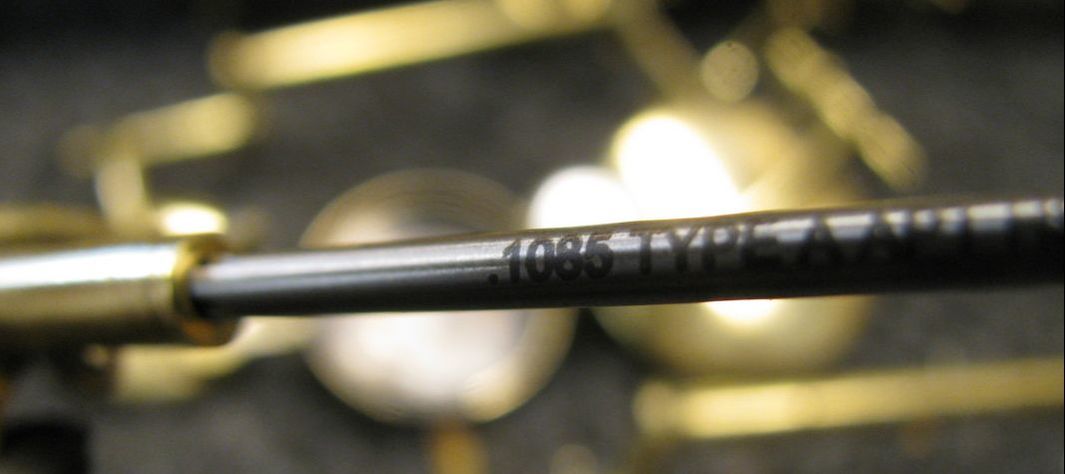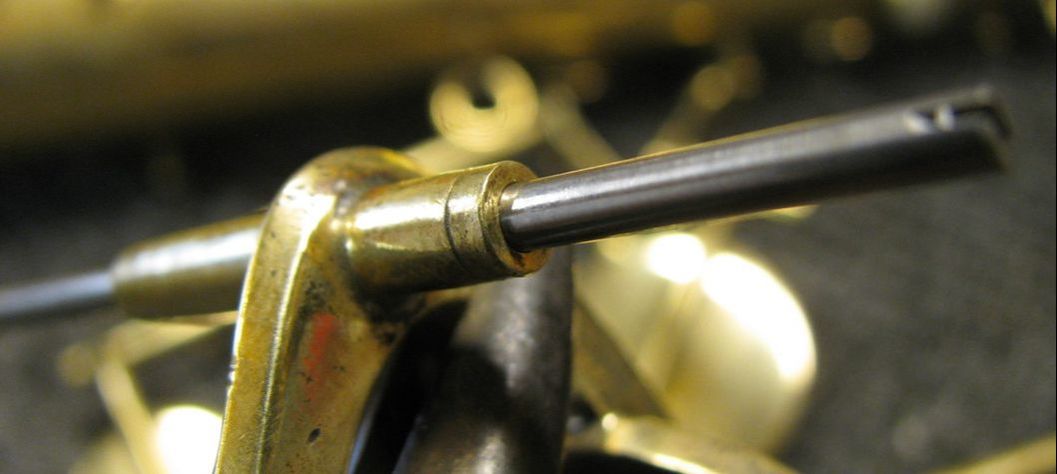You'll hear meticulous repair techs talk about tolerance in regard to key fitting. So, what is it? Put simply, tolerance describes how two pieces fit. There's High Tolerance and Low Tolerance. High tolerance is when the mating parts have very little deviation, meaning they fit tightly. Low tolerance is when greater deviation is allowed, meaning they fit loosely.
The goal in saxophone overhauls is to fit the key work as tightly as possible without making it bind. Traditionally this is done by swedging the keys with a three point swedging collet like those in the pictures below. It has proven to be effective for decades and will undoubtedly continue to be used by repair techs everywhere for years.
| The lower stack hinge rod being measured in this photo belongs to a 1931 Conn Transitional and it is worn out. It currently measures .105" but when it left the factory 87 years ago it measured .106" After 87 years, the metal has worn away. The key hinge tubes are equally worn out. Their inner diameters are larger than when they were made due to the loss of metal from almost a century of action. So, there's at least .002" of slop between the hinge rod and the hinge tube. Which is a lot when it comes to key fit. For a high tolerance fit, the new rod needs to be oversized. |
| I made a new rod using the .108" pictured here. Of course, it will not fit in the hinge tube, but I will be able to ream the tube with a straight shank reamer of my choosing. And I choose to use a reamer only .0005" larger than the rod. The rod is .108" The reamer is .1085" Think of it as 108 and a half. A standard index graduates the reamers in uneven leaps. After .106" comes .110". That's a leap of .004" and that is not helpful. This is when tolerances come into play. Special ordering your reamers to .0005" of your rods makes a huge difference in how the rods will fit the keys. |
When you run into badly worn out keys like this and you just swedge them harder, they cinch up at the ends only, and if there's as much slop as these keys had, you'll leave them misshapen as well. You can see the swedge marks from the previous overhaul here - which is fine, but going for it again would have made them visibly ovaled at the ends like footballs. This last photo is the new hinge rod in the accurately reamed key.

